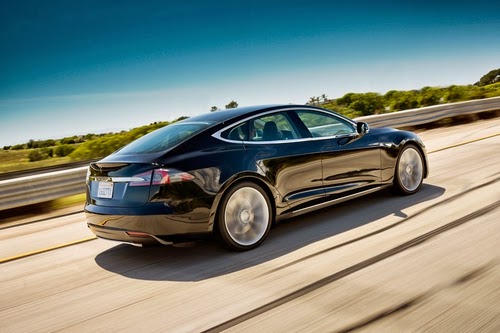In an electric car, as soon as your foot lifts off the accelerator pedal the regenerative braking system activates slowing the car down while recovering energy. The extent of this effect varies from car to car, but this is generally the way they work. The effect is similar to engine braking on a manual transmission car or motorcycle where, unless you press the clutch pedal, the engine slows the car down. What’s different in an electric car is that while the regenerative system slows the car, energy is recovered into the battery pack.
This is a cool feature of electric cars that is impossible on even the most efficient of gasoline powered cars. Once burned you cannot reassemble gasoline and burn it again.
But, is this safe? The car is slowing down and the brake lights are not coming on, so therefore the person following you doesn’t know your car is going to slow down, and they might slam their car into yours.
At least that’s the theory some espouse. That this cool feature of electric cars is actually dangerous, and Something Needs To Be Done About It.
The first time I read this theory I wondered, is this just some of that FUD stuff (Fear Uncertainty and Doubt) that some of us believe is being purposely seeded into the population to make us think electric cars are a bad idea? That may be, but let’s consider this idea anyway.
Certainly, if a car slows down significantly without signaling the brake lights, any following drivers won’t have warning and are more likely to slam into your car. That’s why police officers issue citations for busted tail lights, right? It’s not (just) a money making thing, it’s a safety thing.
But, is it true that electric cars with stiff regenerative braking systems do not turn on the brake lights?
In some electric cars I’ve driven, you can almost drive with just one pedal – the accelerator. The car slows so significantly once you take your foot off the pedal that you can almost stop the car without pressing the brake pedal.
Clearly, an electric car with this behavior needs to turn on the brake lights.
In fact that wouldn’t be terribly hard for an automotive engineer to implement. Simply program the car systems to detect high rate of declaration from regenerative braking, and go ahead and signal the brake lights even if the foot isn’t on the brake pedal. These cars are already highly computerized with everything under CAN BUS control, so it’s just a software matter.
Turns out that, for example, the BMW ActiveE and BMW i3 has that behavior, from what I’ve been able to determine. I don’t know what other electric cars do this as well – but I also believe it would be so straightforward to implement, that I’m expecting the other electric cars also have this behavior.
In other words, I think this is a non-issue, but I don’t have proof of which electric cars have stiff regenerative braking but do not turn on brake lights during regen.
What do you think? Let me know below.
- Highway design could decrease death and injury risk, if “we” chose smarter designs - March 28, 2015
- GM really did trademark “range anxiety”, only later to abandon that mark - March 25, 2015
- US Government releases new regulations on hydraulic fracturing, that some call “toothless” - March 20, 2015
- Tesla Motors magic pill to solve range anxiety doesn’t quite instill range confidence - March 19, 2015
- Update on Galena IL oil train – 21 cars involved, which were the supposedly safer CP1232 design - March 7, 2015
- Another oil bomb train – why are they shipping crude oil by train? – Symptoms of fossil fuel addiction - March 6, 2015
- Chevron relinquishes fracking in Romania, as part of broader pull-out from Eastern European fracking operations - February 22, 2015
- Answer anti- electric car articles with truth and pride – truth outshines all distortions - February 19, 2015
- Apple taking big risk on developing a car? Please, Apple, don’t go there! - February 16, 2015
- Toyota, Nissan, Honda working on Japanese fuel cell infrastructure for Japanese government - February 12, 2015











